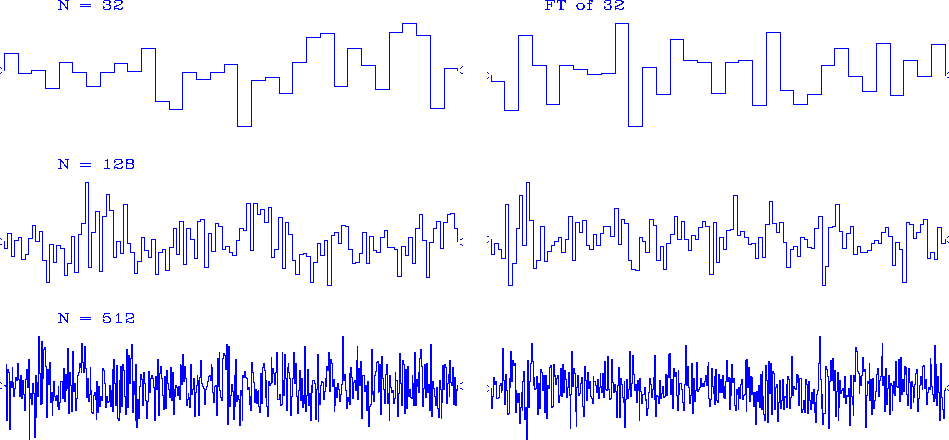 |
Figure 3 Fourier cosine transforms of vectors containing random numbers. N is the number of components in the vector.
Many real signals are complicated and barely comprehensible. In experimental work, we commonly transform such data. To better understand what this means, it will be worthwhile to examine signals made from random numbers.
Figure 3 shows discrete Fourier transforms of random numbers. The basic conclusion to be drawn from this figure is that transforms of random numbers look like more random numbers.
 |
A random series containing all frequencies is called a ``white-noise" series, because the color white is made from roughly equal amounts of all colors. Any series made by independently chosen random numbers is said to be an ``independent" series. An independent series must be white, but a white series need not be independent.
Figure 4 shows Fourier transforms of random numbers surrounded by zeros (or zero padded).
 |
Since all the vectors of random numbers are the same length (each has 1024 points, including both sides of the even function with the even part (513 points) shown), the transforms are also the same length. The top signal has less randomness than the second trace (16 random numbers versus 64). Thus the top FT is smoother than the lower ones. The best way to understand this figure is to think of the left-hand signal as a frequency function. When higher frequencies are present, the right-hand signal oscillates faster.